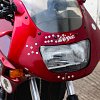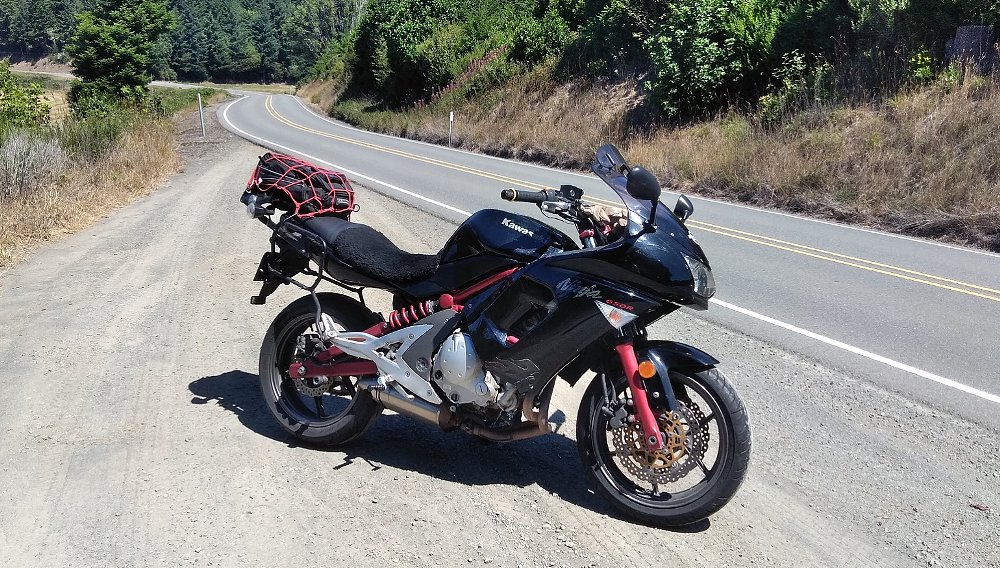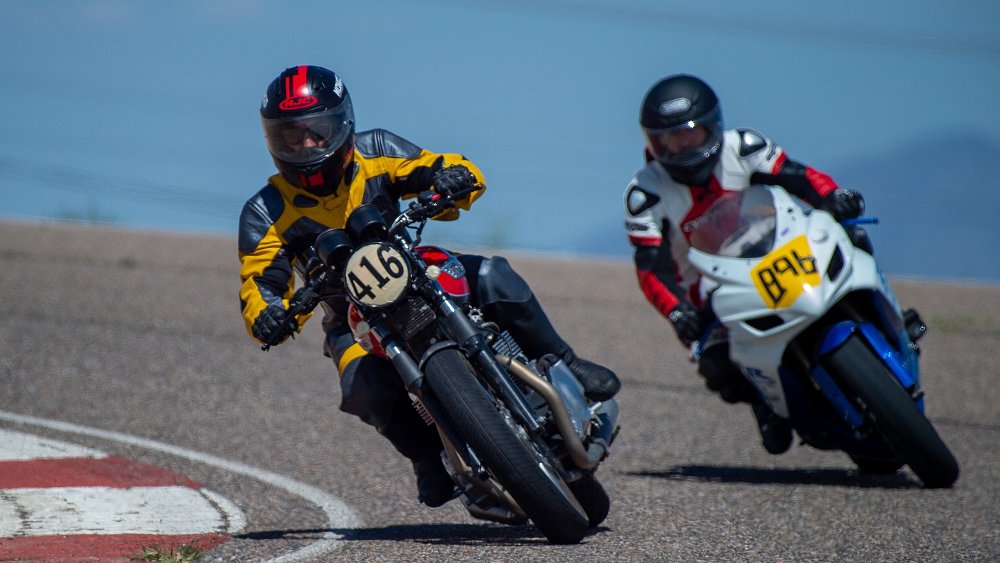There is nothing glamorous about most motorcycles at the bottom of the used bike barrel. “Nice” bikes don’t change hands at three-digit prices.
That’s not to say you can’t score a sturdy beater bike, an interesting project, or a sweet deal from the rare seller who just needs some quick cash. Inexpensive motorcycles are their own special kind of fun and frustration for those of us who fix and ride them.
Cheap thrills addicts Lou Turicik and Colin Gorey took a look around and saw an opportunity for a motorcycle event that celebrates the good times to be had on sub-$1,000 motorcycles. They built that dream into the annual Reliability Rally, and this year’s 400-mile, two-day run quickly sold out to a range of concerningly affordable motorcycles and their grease monkey pilots. I had to miss last year’s ride at the Tail of the Dragon, but when an unloved Kawasaki EX500 ended up in my garage this summer, I grabbed a spot at 2021’s event in West Virginia. Just one problem: My bike didn’t run, ride, stop, or even turn on, and the event was two months away.
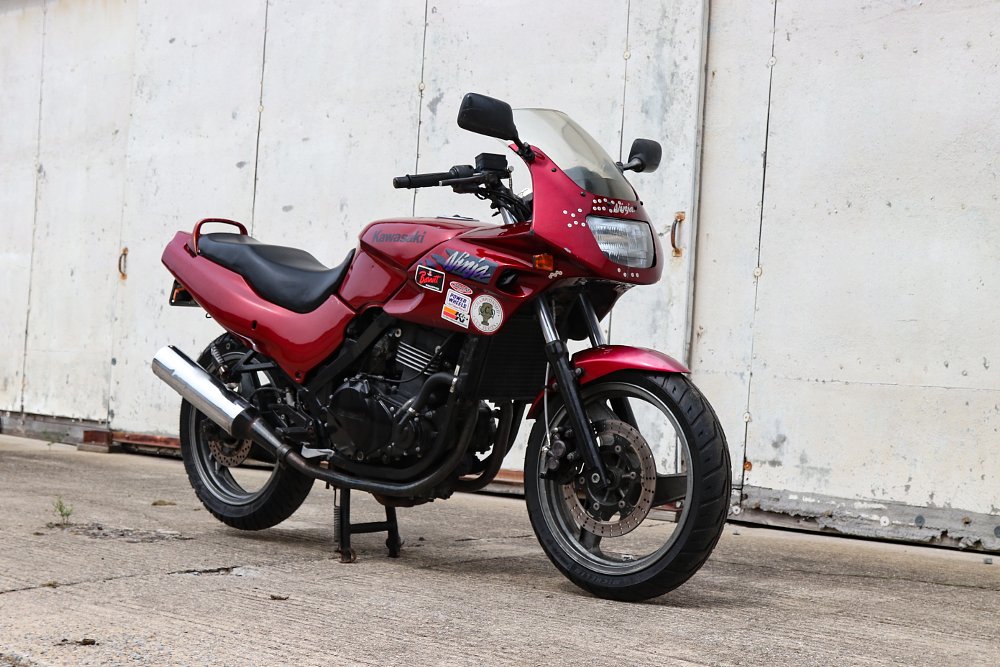
Meet the rally bike
Listen, you want a dirt-cheap motorcycle that won’t quit? Get yourself a 1987 to 2009 Kawasaki EX500, also called a Ninja 500 or GPz500 in some markets. It’s probably the best bargain motorcycle out there if you want wheels for under $1,000. Consider this: Fellow Zillan George built his EX into a track bike, a commuter, an off-road thrasher and even a dog-hauler.
EX500s routinely sell for rock-bottom prices, and they’re built like tanks. Parts are rarely an issue because Kawasaki produced them in two similar generations over 30 years. Even with today’s inflated prices for used bikes, these vehicles can be had for three figures in my area with a few fixable issues and some road rash. EX250s, on the other hand, command a relative premium despite their power disadvantage. The days of “just get a Ninja 250 for $1,000” are effectively over. Thankfully for the scavengers of the motorcycling world, Kawi’s 500 twins are as overlooked as ever.
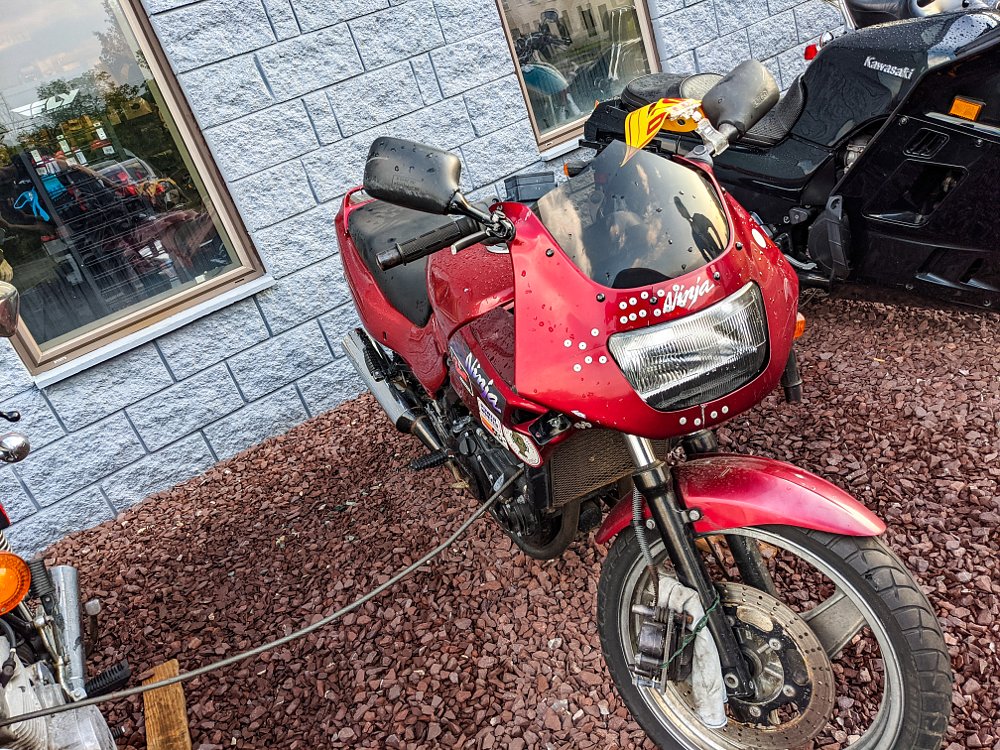
This 1994 EX500 was crashed so badly that both clipons were mangled — one broken clean off and dangling by its cables — so the previous owner took it to a local dealership for repairs. After seeing a quote for all the damage, the owner decided the bike wasn’t worth fixing, signed the title over to the dealer, and peaced out. When the dealership needed to make room for inventory several years later, the paperweight EX was going to the junkyard unless somebody with no standards wanted to pay scrap value and haul it away. Where they saw garbage, I saw a decent shot at bagging the Lowest Purchase Price Award at the Reliability Rally. Hmmm… Soon this jalopy was sitting under the shop lights in Greaser’s No-Kill Motorcycle Shelter. How bad could it be?
The dealer ran a VIN check to see what we could learn of the bike’s history before it wound up in their back lot. As it turns out, this ‘94 sat in a Kawasaki showroom in the Midwest until its first registration in 2005! That means its factory tires had expired by the time it finally sold. The Ninja was sold twice before being crashed out of commission about five years ago. My colleague Zack Courts recognized the faded CCS stickers from his club racing days, so this may have been someone’s low-buck track bike at one time. Still, the Ninja only had 7,500 miles on the clock. Time to dig in.
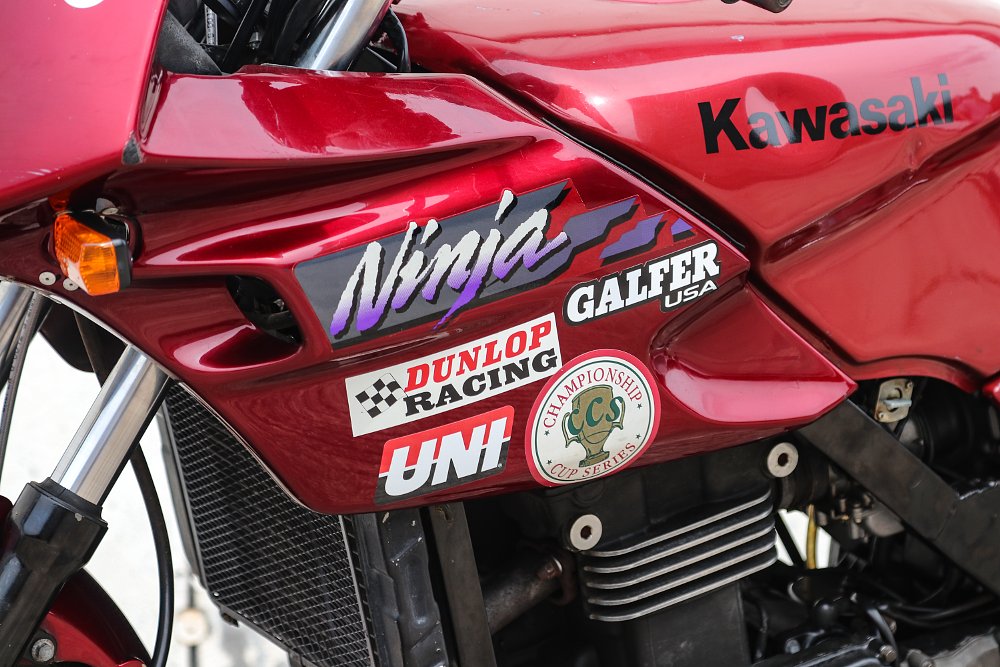
Cheap bikes can add up
Removing a cap on the timing cover allows access to the left end of the crank with a socket to easily check if the engine is seized. Thankfully, it spun freely. I threw a test battery in the bike and tried the key for signs of life. The dash lit up and even the hazards worked. None of the wiring had been hacked except a few turn signal connections. The electrics cost me about $0.50 in 10A fuses.
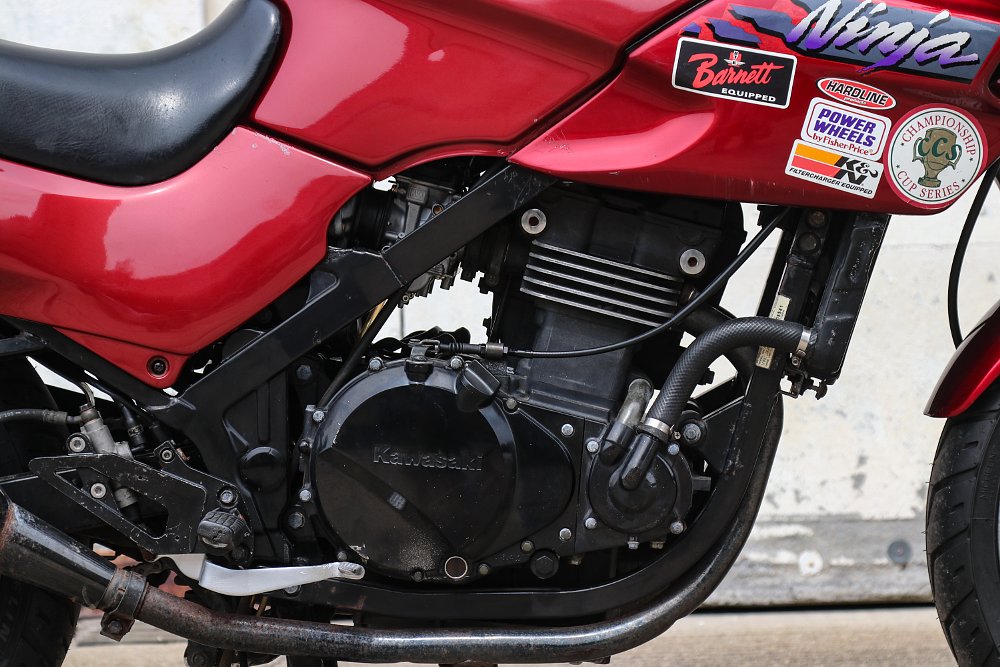
My personal rule with project bikes is to make sure the brakes work before getting the engine going. Once a motorcycle runs, the temptation to take “just a quick test ride” can be dangerous. Besides, the Ninja’s front caliper was tied to the fender with wire for unknown reasons, so that seemed like a good place to start. I pulled the caliper, refreshed the stuck pistons and seals, then re-installed with fresh fluid, pads and a Galfer braided line. The back brake started functioning again after I found the source of the master cylinder’s leak: missing crush washers at the banjo fitting. Total cost here was about $100.
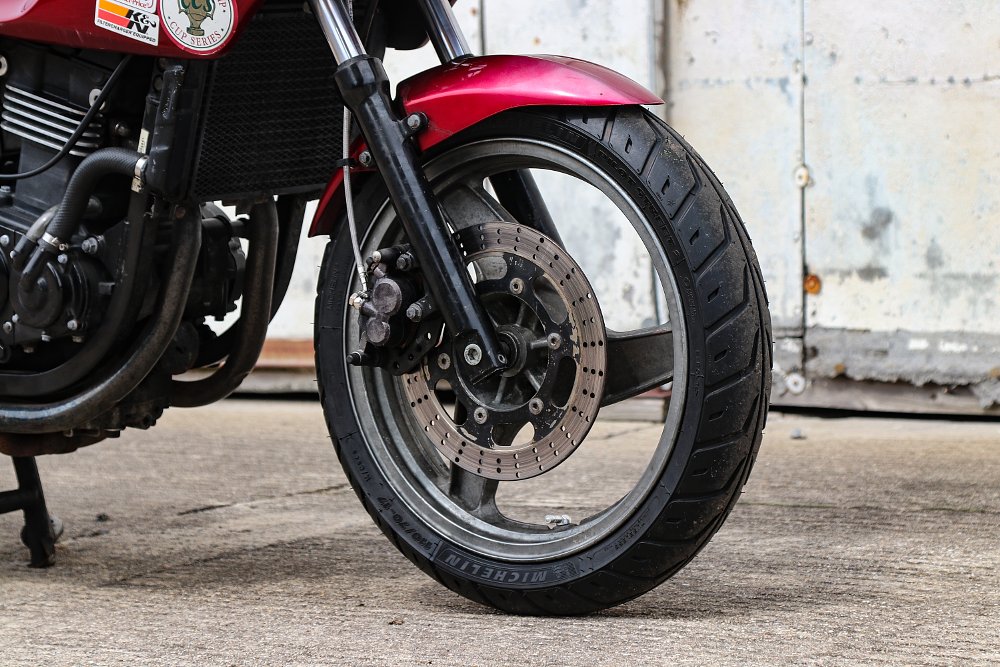
Next up were the wheels and tires. A closer look suggested that this particular motorcycle was no stranger to sketchy riding, as the front Kenda Cruiser tire was made in 2006, but the bike was on the road as recently as 2016! Instead of fighting the fossilized tire with levers, or paying a shop to remove it (ruining my budget cred), I resorted to my low-effort junk bike method: remove the wheel, then work both beads free. Chop an access hole in the tire with a Sawzall, cut towards the bead with a small hacksaw, and then finish off the last quarter inch with a Dremel cutoff wheel. It's faster and far easier than wrestling a crummy old tire on the ground — I have never ruined a wheel with this approach. (Note: Only works if the bead is off the rim.)
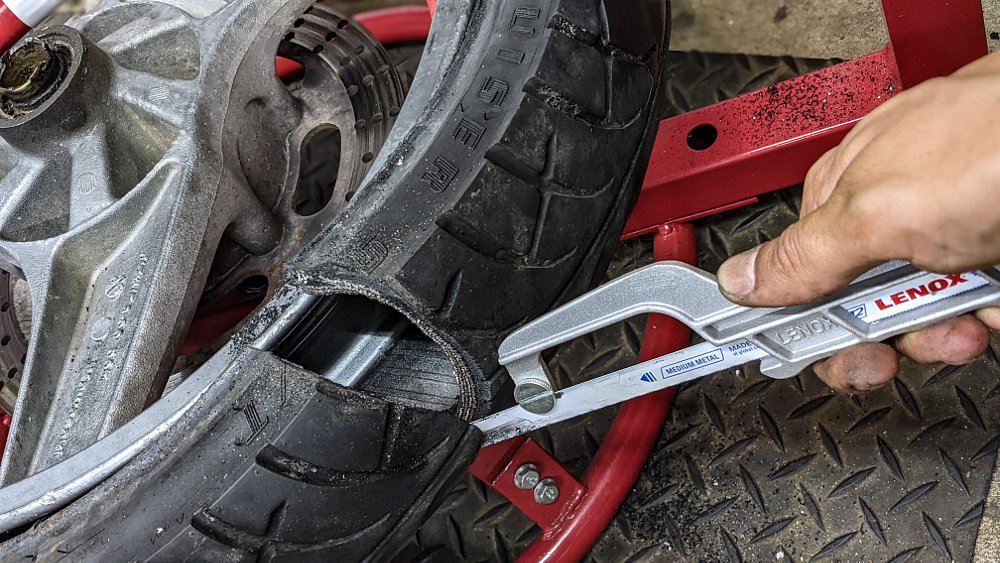
I replaced the dry-rotted valve stems with right-angle units in silver to match my sweet chrome mufflers, then spooned on a set of Michelin Pilot Street 2s. The sprockets were spitting split O-rings out of their teeth, so the chain was replaced and readjusted. Praise be to the center stand for easy wheel and final-drive maintenance. Two tires, a chain and valve stems rang in at $225.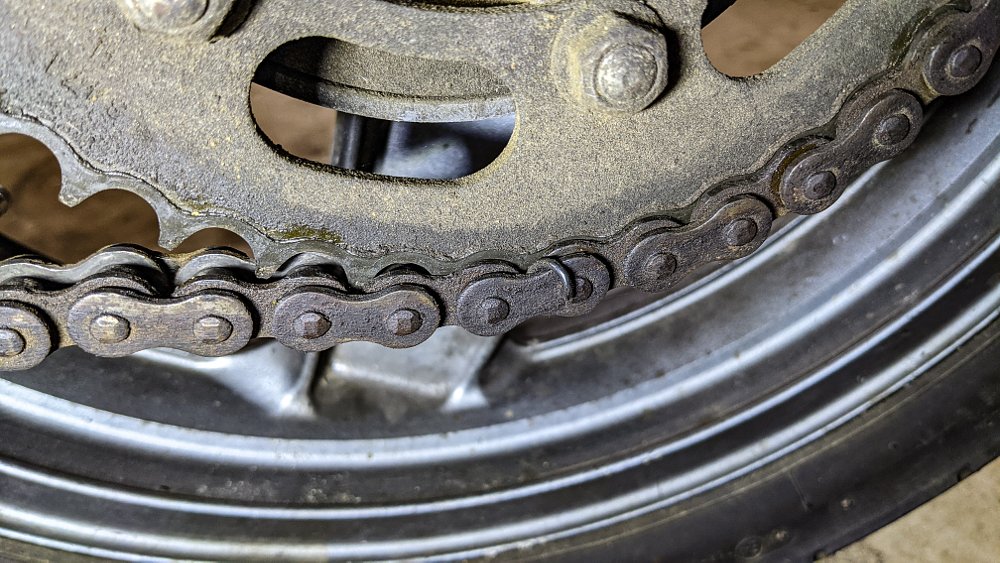
While the tank stewed in vinegar to clean out the rust, I tossed the carbs in my ultrasonic cleaner before rebuilding them with fresh cables. Next came an oil change, a coolant check, a new battery, clutch cable, fresh gas, and a replacement left clipon so I could steer. This added another $150. As expected, the Ninja cranked over and fired up once the carb bowls filled. The rally was within reach, but not before the Ninja’s other problems were addressed.
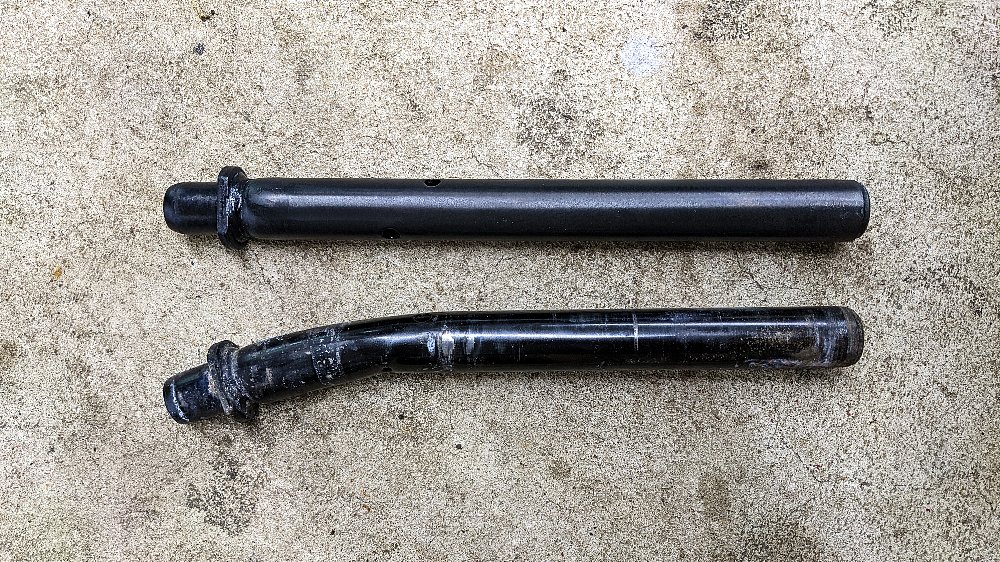
Although the bike ran, there were concerning noises coming from the left header and the starter cover. The first problem turned out to be an exhaust gasket that someone must have installed with their eyes closed. I tried to stay within the budget spirit of the rally and annealed the old gasket with a torch so I could reuse it. The typewriter ticking from the exhaust port was history.
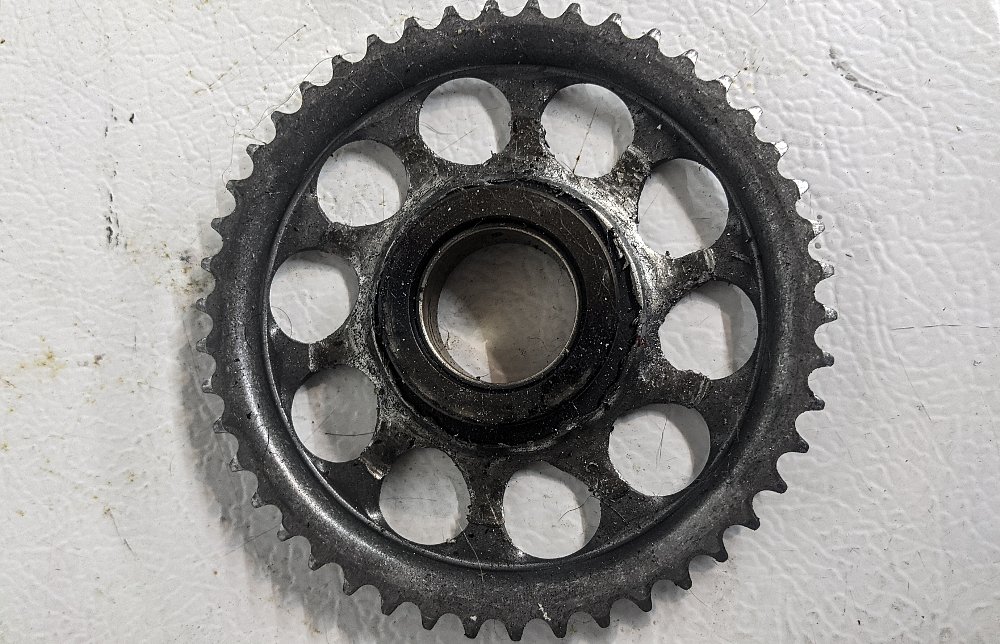
As for the starter, sometimes it would cut out with an abrupt “clack!” Even when the Ninja was running, a screwdriver handle held to my ear revealed unhappy metal-on-metal noises inside. Pulling the cover revealed a damaged starter chain guide that allowed too much slop in the chain itself, while the loose flywheel bolts shed enough shavings into the starter clutch to bind it up — the problem had gone on for long enough that the starter sprocket was ruined. Look at how the circular holes have been twisted into ovals! I threw in a replacement guide and starter sprocket, cleaned up the clutch rollers, springs, and chain, and the Ninja sounded like a brand new machine. The starter is one of the few weak points on these bikes, along with the flywheel magnets on first-gen EX500s. That starter rebuild set me back around $45.
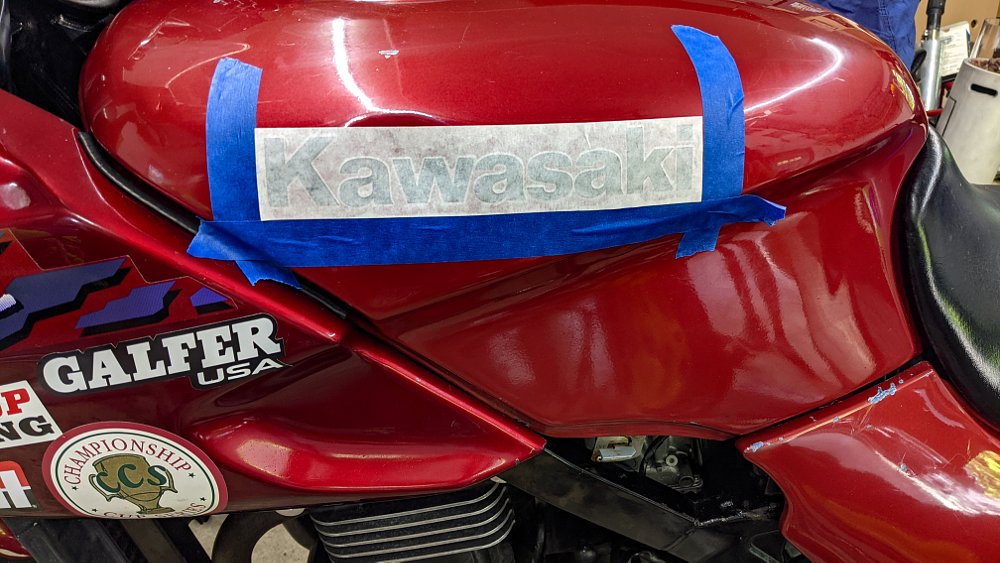
For the finishing touches, I employed most of the tricks shown in my article on cheap aesthetic improvements for dingy motorcycles. It’s amazing what a little elbow grease and spray paint can do. It takes all of 10 minutes to remove and paint the radiator stone screen. Bam, instant improvement with minimal work. High-temp black took care of the muffler caps, and a spare set of Kawasaki tank decals was donated from my brother's parts stash. It's still very obvious that the tank and tail were badly repainted at some point. Maybe the next owner of this motorcycle can pony up for new plastics.
One last piece of the puzzle is a free upgrade for a little more power with significantly better fueling, according to an EX500 forum legend named FOG who documents the “FOG Mod” in this post. The basic idea is drilling a one-inch hole in the airbox side cover and adjusting the mixture screws to fix low-speed stumbling and the overly rich top end from the factory.
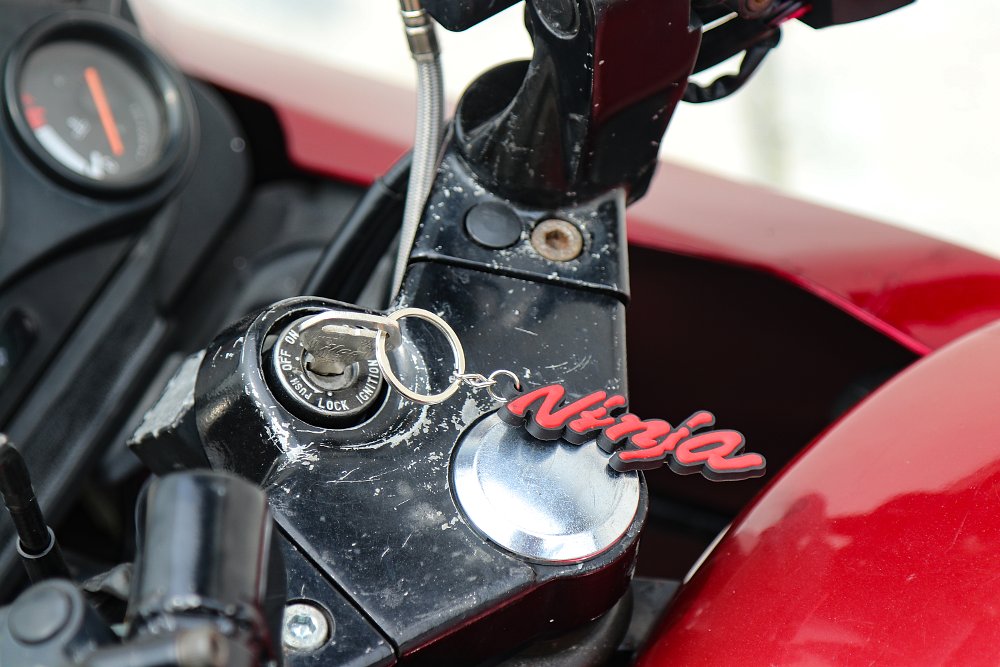
How’s it ride?
I’ve spent a few miles on EX500s in my time. This is easily the worst I've ridden as far as appearances go, but as a runner, the bike has plenty of pep in its step. The fueling and power delivery are drama-free from dead stop to flat out. (Thanks, FOG.) Brakes are good enough, tires are light years ahead of what it had, and the bad noises are gone. It pulls like it was built yesterday, but looks like a clapped-out club racer from 15 years ago. The bike sips gas and generally doesn’t care about anything. It’s hard to imagine a better motorcycle for the money.
So what have we learned?
I have 150 miles on the bike since crossing the last jobs off my list. That Ninja was rough, no doubt about it. I’m sure it would've totaled the bike to take it in for a tire change, let alone pay a dealership tech to fix all the bike’s other problems. I don't charge myself for labor, and I still put $500 into an exceptionally cheap motorcycle.
Running, titled, and up to date on all essential items, the Ninja is now worth more than what I put into it, and probably even worth more than $1,000 in these parts. Not bad for a scrap bike and some basic motorcycle repairs done after hours over the course of a few weeks.
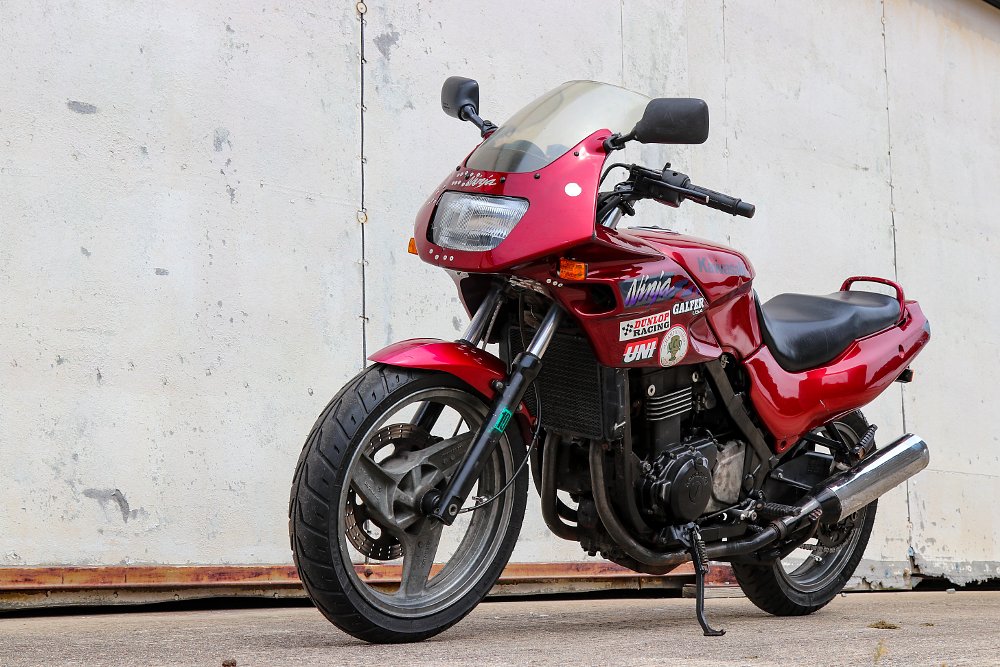
I don’t know how long this project will stay in my garage. All that matters to me right now is taking it down to West Virginia to meet other people who get their kicks saving cheap motorcycles from junkyards across America. If the Ninja was sold for scrap, and I don’t take any issue with that possibility, this story could have ended before it began. Instead, I’ll attend the Reliability Rally over the weekend and report back with full details of the route, breakdowns, bikes, and riders. Hopefully this bike will go on to be somebody's first motorcycle, or a track day learner. There is plenty of life left in it. Stay tuned.









